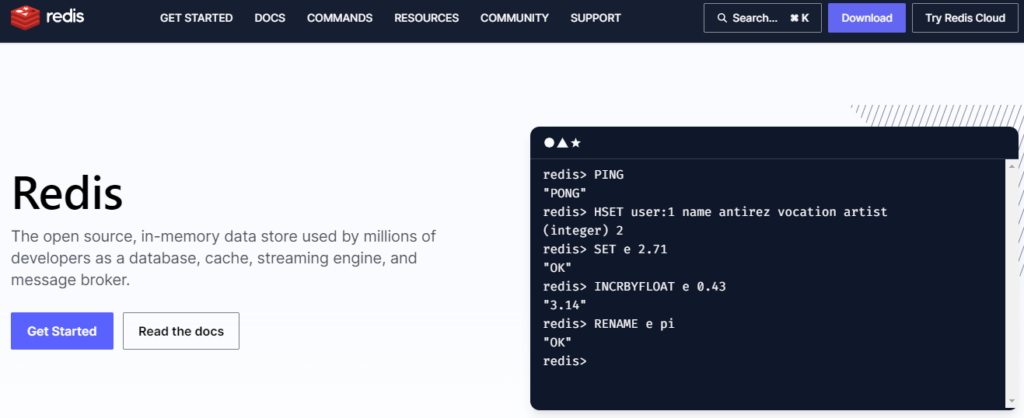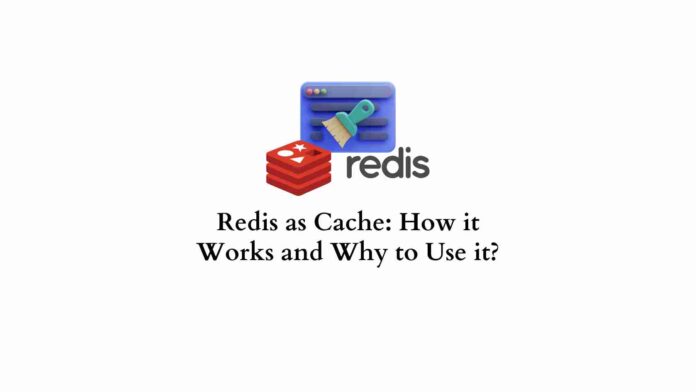Redis uses a key-value data model, where each key corresponds to a value. The values can be strings, hashes, lists, sets, or sorted sets, and Redis provides a variety of commands to manipulate these data structures.
One of the main advantages of using Redis as a cache is its speed. Since the data is stored in memory, Redis can quickly retrieve and serve the data without having to access a disk. Redis provides features such as expiration times and automatic eviction of least-recently-used data, which help ensure that the cache remains up-to-date and optimized.
What is Caching?
Caching is the process of storing frequently accessed data in a temporary storage area, known as a cache, in order to speed up subsequent access to the data. Caching is commonly used in computer systems to improve performance by reducing the time it takes to retrieve data from the main storage or database.
When a user requests data, the system checks if the data is already available in the cache. If the data is present in the cache, it can be retrieved quickly without accessing the main storage.
Caching can be implemented at different levels in a system, including at the hardware, operating system, web server, or application level. In web applications, caching is often used to improve the performance of frequently accessed web pages or resources, such as images or scripts. caching is an effective technique to improve the performance of computer systems by reducing the amount of time required to access frequently used data.
What is Redis Cache?


Redis Cache is an in-memory data store that is used to cache data to provide fast, low-latency access to frequently used data. Redis is known for its speed, simplicity, and flexibility, and is widely used in modern web applications.
Redis Cache is a popular choice for caching because of its ability to store data in RAM, which allows for extremely fast read and write operations. Redis is also known for its ability to handle large amounts of data with ease, making it an ideal choice for high-traffic websites and applications. Redis Cache is a powerful tool that can help improve the performance and scalability of modern web applications by providing fast, low-latency access to frequently used data.
You can more read about Redis Cache
How does Redis Work?
When data is stored in Redis, it is typically first loaded from the disk into memory. Redis maintains a data structure called the Redis database, which is used to manage the data and perform operations on it. Redis provides a variety of commands and APIs that can be used to interact with the database and perform operations on the data.
One of the key features of Redis is its support for atomic operations. Atomic operations are operations that are performed as a single, indivisible unit, which means that they are guaranteed to complete successfully or not at all. This allows Redis to perform complex operations on the data without the risk of data corruption or race conditions.
Its speed, scalability, and versatility make it an ideal choice for modern web applications, and its support for advanced features makes it a powerful tool for building complex systems.
Why and When to Use Redis?
- Redis is widely used as a caching layer to speed up access to frequently accessed data. By caching data in memory, Redis can deliver extremely fast response times, which can help improve the performance of web applications.
- Redis is often used as a session store, where it can store session data for web applications. This allows session data to be quickly accessed and updated, improving the performance of web applications.
- Redis allows messages to be published and subscribed to in real time, making it ideal for building chat applications, real-time analytics systems, and other real-time applications.
- Redis is often used to implement leaderboards and counters in games and other applications. Redis provides support for sorted sets, which makes it easy to store and update scores and rankings.
- Redis can be used as a job queue to manage background tasks in web applications. Redis allows tasks to be added to a queue and processed asynchronously, making it ideal for handling long-running or resource-intensive tasks.
- Redis can be used to store and process time-series data, such as log data, sensor data, and other types of time-series data. Redis provides support for sorted sets and other data structures, making it a powerful tool for analyzing time-series data.
What are the benefits of using Redis Cache?
- Redis Cache stores data in memory, which allows it to deliver extremely fast read and write operations. This makes it an ideal choice for caching frequently accessed data, as it can significantly improve the performance of web applications.
- Redis Cache is designed to be highly scalable, which means that it can handle large amounts of data and high levels of traffic. Redis Cache can be used in a distributed environment, which allows it to scale horizontally by adding more nodes to the cluster.
- Redis Cache supports a wide range of data types, including strings, hashes, lists, sets, and sorted sets. This makes it a powerful tool that can be used to store and manipulate a wide range of data.
- Redis Cache provides support for persistence, which means that data can be saved to disk to ensure that it is not lost in the event of a system failure. This makes Redis Cache a reliable choice for applications that require data to be available at all times.
- Redis Cache provides support for atomic operations, which means that complex operations can be performed as a single, indivisible unit. This ensures that operations are performed correctly and that data is not corrupted.
- Redis Cache provides a simple and intuitive API that can be easily integrated into web applications. This makes it easy to get started with Redis Cache, even for developers who are new to the platform.
My Website Uses Redis Cache


Using Redis Cache can help improve the performance and scalability of your website. By caching frequently accessed data in memory, Redis Cache can deliver fast read and write operations, which can help reduce the load on your database and improve the performance of your website.
To get the most out of Redis Cache, it’s important to carefully consider the data that you are caching and how you are using Redis Cache. Caching all of your data may not be necessary or practical. Instead, focus on caching the data that is most frequently accessed and that has the biggest impact on the performance of your website. Redis Cache provides several caching strategies, including expiration times, eviction policies, and LRU (Least Recently Used) caching. Choose the strategy that best fits your needs and the nature of your data.
Instead of using Redis Cache as a standalone cache, consider using it as a read-through cache. This means that Redis Cache will serve as a cache for your database, but any data that is not found in the cache will be retrieved from the database and added to the cache. This can help ensure that your cache is always up-to-date and that stale data is not served.
Keep an eye on the performance of Redis Cache and make adjustments as necessary. This may include adding more Redis Cache nodes to handle increased traffic, adjusting cache expiration times, or optimizing your caching strategies.











